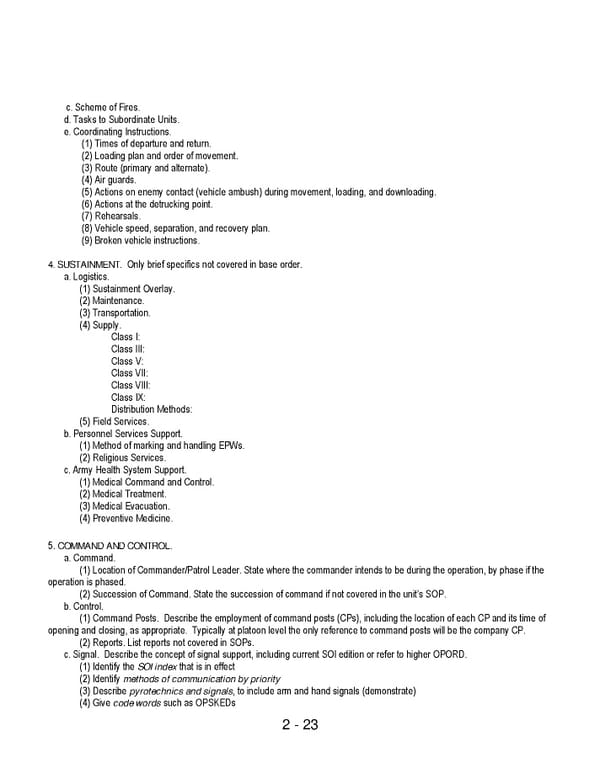2 - 23 c. Scheme of Fires. d. Tasks to Subordinate Units. e. Coordinating Instructions. (1) Times of departure and return. (2) Loading plan and order of movement. (3) Route (primary and alternate). (4) Air guards. (5) Actions on enemy contact (vehicle ambush) during movement, loading, and downloading. (6) Actions at the detrucking point. (7) Rehearsals. (8) Vehicle speed, separation, and recovery plan. (9) Broken vehicle instructions. 4. SUSTAINMENT. Only brief specifics not covered in base order. a. Logistics. (1) Sustainment Overlay. (2) Maintenance. (3) Transportation. (4) Supply. Class I: Class III: Class V: Class VII: Class VIII: Class IX: Distribution Methods: (5) Field Services. b. Personnel Services Support. (1) Method of marking and handling EPWs. (2) Religious Services. c. Army Health System Support. (1) Medical Command and Control. (2) Medical Treatment. (3) Medical Evacuation. (4) Preventive Medicine. 5. COMMAND AND CONTROL. a. Command. (1) Location of Commander/Patrol Leader. State where the commander intends to be during the operation, by phase if the operation is phased. (2) Succession of Command. State the succession of command if not covered in the unit’s SOP. b. Control. (1) Command Posts. Describe the employment of command posts (CPs), including the location of each CP and its time of opening and closing, as appropriate. Typically at platoon level the only reference to command posts will be the company CP. (2) Reports. List reports not covered in SOPs. c. Signal. Describe the concept of signal support, including current SOI edition or refer to higher OPORD. (1) Identify the SOI index that is in effect (2) Identify methods of communication by priority (3) Describe pyrotechnics and signals, to include arm and hand signals (demonstrate) (4) Give code words such as OPSKEDs
 Ranger Handbook Page 44 Page 46
Ranger Handbook Page 44 Page 46